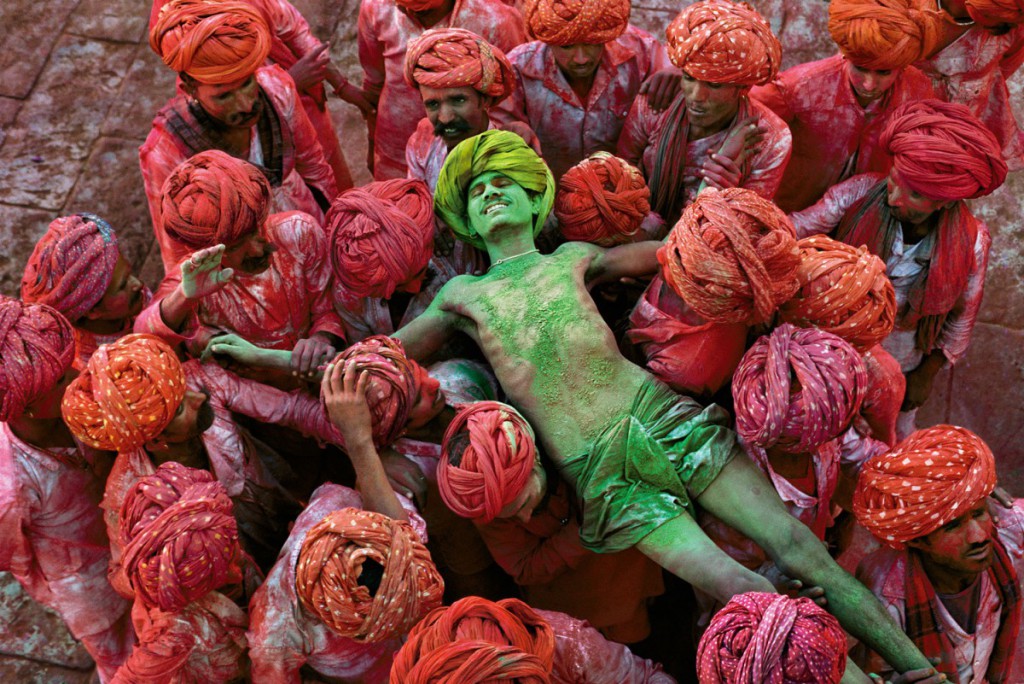The Steve McCurry exhibit is one of the most beautiful exhibit I have ever seen. As soon as I came out the elevator on the 5th floor, I was captivated with the theme of the exhibit. The walls are painted dark blue while at the same time the lights on the floor are very dim. This made the walls look very smooth. On the other hand, because the walls are dark, the Photos Seems to pop right off the walls because there are spot lights shining directly at each photos. Each photo is mounted about an inch from the walls and they have no frames, this effects makes the photos float right off the walls. They are about 30 Photos in this exhibit, which were taken around the 1980s, and 2000s.
“The Steve McCurry exhibit brings together stunning photographs of India, its people, monuments, landscapes, seasons, and cities. A combination of portraits, landscapes, and documentary imagery express McCurry’s curiosity and commitment to capturing unexpected moments. The exhibition opens with images of spiritual life, as well as selections from the series India by Rail, which portray the movement and life surrounding the Indian Railway. Photographs from the Monsoon series depict India’s season of heavy storms that is also synonymous with life, passion, and celebration. Later works capture beautiful landscapes, historical sites, and the life of ordinary people in major cities and rural areas, representative of diverse regions of India” Rubinmuseum.org
I have to say all of Steve McCurry’s photos of India are extremely beautiful, but one of my favorite is the photo of the Holi Festival. I love this photo because I can relate to it, we also celebrate this Holiday in my birth county in Guyana and also in the United States. This traditional Indian festival marks the beginning of spring with an explosion of color. People of all ages participate in the festivities which include playful pigment fights using dyed powder and water. Everyone’s fair target no matter their age, relation, or social status meaning anyone can join in on the fun! This photograph is successful because of the strong angle in which McCurry chose to photograph this photo. We can tell that Steve is right in the action and not using a strong lens in which he is far away. The people in the photo are well aware he is taking their photo and they seem very trusting and happy.
In 1984, McCurry The photographed an Afghan girl named Sharbat Gula. This photo instantly because famous all over the world. She was only a teenager when she was photographed. “The portrait by Steve McCurry turned out to be one of those images that sears the heart, and in June 1985 it ran on the cover of this magazine. Her eyes are sea green. They are haunted and haunting, and in them you can read the tragedy of a land drained by war. She became known around National Geographic as the “Afghan girl,” and for 17 years’ no one knew her name.” – Newman. This portrait of this girl is so famous because of her she is looking directly into the camera, looking at the viewers. You can see her pain right in her eyes. This portrait fills the frame perfectly, and the lighting focusing directly on her face and her clothing. This image is so powerful that by looking at it, you can instantly tell her life story. Something that I take away from this exhibit is no matter how bad you think you have it, there is someone out there struggling even more, never take what you have for granted,





This exhibit was very beautiful and you describe well how the exhibit design adds to the power of the photos. You also picked a gorgeaous photo to write about. the angle of view as you state is surprising and really brings us into the action.
I would also encourage you, if in the future you have some special knowledge such as your first hand experience of the Holi festival, to share it with your colleagues! Neither the guide nor I had any first hand experience with the holiday and you could have added a lot to the conversation.